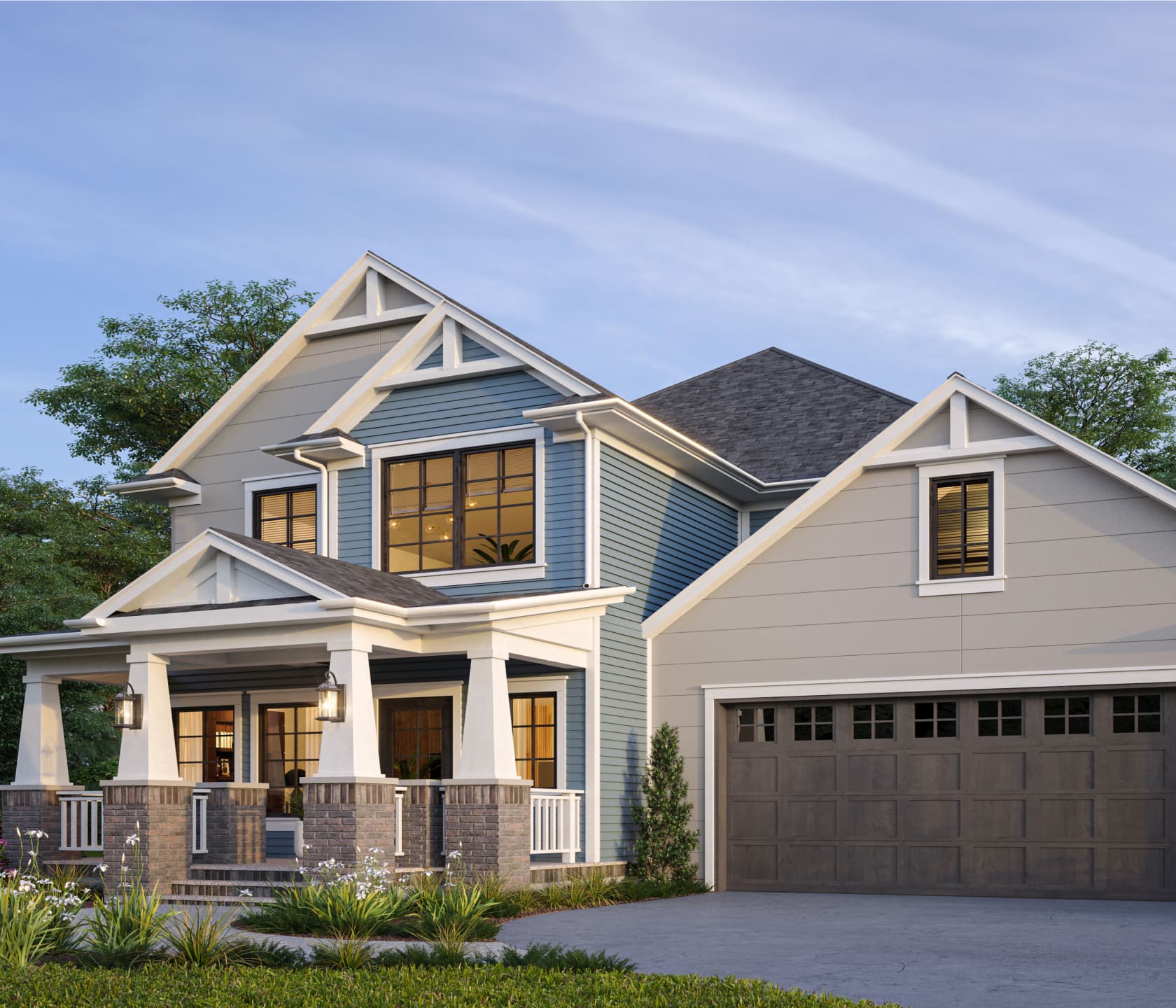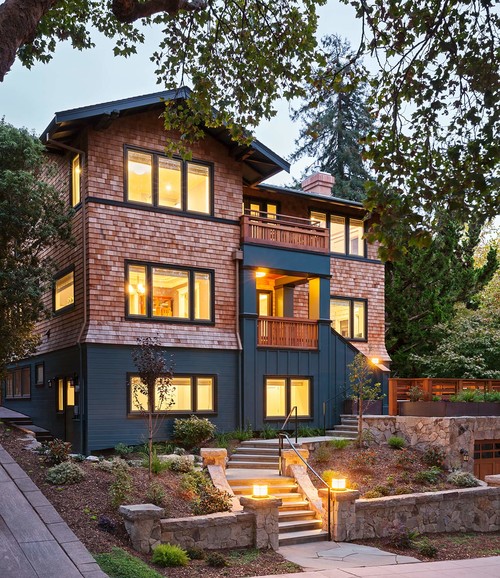The Duty of Arts & & Crafts Architects in Elevating Architectural Services in Residential Style
Arts and Crafts architects substantially influence residential style via their commitment to craftsmanship and sustainability. They prioritize handcrafted information and natural products, which improve both looks and neighborhood identification. By involving clients in the design process, these architects create distinct living areas that resonate with personal tastes. This strategy raises questions about the future trajectory of household architecture and its prospective effect on neighborhood dynamics. craftsman style house. What exists in advance for this ageless style ideology?

The Principles of Arts and Crafts Architecture
The significance of Arts and Crafts architecture lies in its commitment to craftsmanship and simplicity. This architectural movement arised in the late 19th century as a response to automation, stressing the worth of handmade details and all-natural materials. The principles of Arts and Crafts architecture focus on capability and harmony with the setting. Frameworks commonly feature low-pitched roofs, vast eaves, and exposed rafters, advertising a feeling of unity with nature.
Artisans played a considerable function in this design, typically integrating ornamental elements like stained glass, ceramic tiles, and woodwork, which mirror regional workmanship. The shade combination often tends to be natural and controlled, permitting buildings to mix flawlessly right into their surroundings. On top of that, the design motivates open flooring plans and common rooms, promoting a feeling of togetherness. Overall, the principles of Arts and Crafts architecture commemorate the charm of simpleness and the significance of human link to both nature and community.

Lasting Practices in Residential Layout
While the demand for environmentally liable living remains to expand, sustainable methods in domestic design have gotten considerable traction amongst architects and home owners alike. Architects are increasingly incorporating energy-efficient technologies and lasting materials right into their designs, aiming to minimize carbon impacts and enhance energy preservation. Approaches such as passive solar design, environment-friendly roofings, and rainwater harvesting systems are ending up being common parts of modern residential architecture.
The option of in your area sourced products decreases transportation discharges and sustains local economies. Emphasis on natural light and air flow not only improves interior air top quality however likewise lowers reliance on artificial lights and environment control systems. These lasting practices show a commitment to maintaining the environment while providing house owners with comfortable, efficient home. As understanding of environmental problems expands, the integration of sustainability in domestic layout is poised to become a specifying characteristic of contemporary architecture, guided by the principles developed by Arts and Crafts architects.
Customization and Customization in Home Design
Personalization and personalization in home design have actually arised as essential fads in reaction to the expanding need for distinct living environments that show individual preferences and way of livings. Homeowners significantly seek to tailor areas that reverberate with their personal identities, bring about a more purposeful link with their space. craftsman style house. This movement motivates architects to involve customers in the layout procedure, cultivating cooperation that assures the last result personifies the home owner's vision
Elements such as bespoke layouts, personalized materials, and customized finishes permit a varied variety of expressions in residential layout. Arts and Crafts architects play a crucial function in this evolution, emphasizing workmanship and top quality. Their concentrate on incorporating imaginative elements with functionality guarantees that each home is not just aesthetically pleasing however likewise uniquely suited to the residents' needs. This emphasis on modification enhances the general household experience, creating areas that are both personal and enduring.
The Impact of Arts and Crafts Architects on Community Looks
As communities develop, the influence of Arts and Crafts architects considerably forms their aesthetic landscape. By highlighting handmade details, natural materials, and typical construction techniques, these architects create homes that reverberate with their surroundings. Their layouts usually include neighborhood vegetations, appearances, and shades, fostering a feeling of consistency between constructed settings and nature.
In addition, the Arts and Crafts activity promotes neighborhood identification through architectural continuity. By urging home owners to adopt similar layout concepts, neighborhoods create a natural character that boosts visual appeal. This architectural uniformity not only enriches the visual experience however also imparts a sense of pride among residents.
Furthermore, the emphasis on sustainability and craftsmanship in Arts and Crafts architecture lines up with modern-day values, making these styles relevant in modern settings. Eventually, Arts and Crafts architects add considerably to the general charm and social integrity of Get More Info neighborhoods, leaving a long lasting influence on their aesthetic tradition.

Future Trends in Arts and Crafts Architecture
With an enhancing focus on sustainability and customization, future fads in check over here Arts and Crafts architecture are positioned to blend typical workmanship with modern-day advancement - craftsman style house. Architects are most likely to focus on green products, making use of reclaimed timber and natural rock to boost the sustainability of domestic styles. The integration of smart home technology will come to be commonplace, enabling individualized living experiences without endangering aesthetic stability
The resurgence of artisanal methods will promote a renewed gratitude for handcrafted aspects, such as bespoke cabinetry and personalized floor tile job. Future designs might additionally reflect a focus on community-oriented spaces, motivating communication and link amongst homeowners. Outdoor living locations will certainly gain importance, effortlessly incorporating nature into the home setting. As Arts and Crafts architecture develops, it will certainly proceed to recognize its origins while adjusting to modern requirements, creating harmonious areas that mirror private worths and way of livings.
Regularly Asked Inquiries
What Inspired the Arts and Crafts Activity in Architecture?
The Arts and Crafts activity in architecture was inspired by a response versus industrialization, emphasizing handmade quality, natural products, and a go back to traditional workmanship, intending to create unified, functional spaces that commemorated artistry and individuality.
How Do Arts and Crafts Architects Collaborate With Clients?
Arts and crafts architects team up with customers through open dialogue, focusing on personal requirements and aesthetic appeals. They stress workmanship and sustainability, cultivating a partnership that incorporates the client's vision with the designer's experience in design and materials.
What Materials Are Frequently Utilized in Arts and Crafts Houses?
Common products in Arts and Crafts homes include natural timber, rock, and block, highlighting craftsmanship and organic visual appeals. These elements produce a cozy, inviting ambience, showing the activity's commitment to quality and simplicity in layout.
Just how Do Arts and Crafts Designs Enhance Indoor Living Spaces?
Arts and Crafts designs improve interior space by advertising all-natural light, open layout, and handcrafted information. These aspects foster a warm, welcoming atmosphere, urging a connection between homeowners and their settings through thoughtful, useful looks.
What Are Some Famous Instances of Arts and Crafts Architecture?
Famous instances read this of Arts and Crafts architecture consist of the Wager Residence, Greene and Greene's masterpiece in The golden state, and the Robie Residence by Frank Lloyd Wright. These frameworks showcase handcrafted information and consistency with nature, defining the movement's essence.